Themed collection 2022 Green Chemistry Hot Articles

Expanding plastics recycling technologies: chemical aspects, technology status and challenges
This paper reviewed the entire life cycle of plastics and options for the management of plastic waste to address barriers to industrial chemical recycling and further provide perceptions on possible opportunities with such materials.
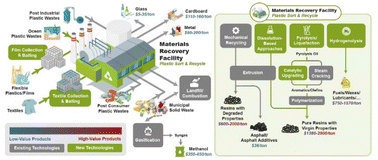
Green Chem., 2022,24, 8899-9002
https://doi.org/10.1039/D2GC02588D
Cyrene: a bio-based novel and sustainable solvent for organic synthesis
This review highlights the use of Cyrene as an alternative green solvent in organic synthesis.
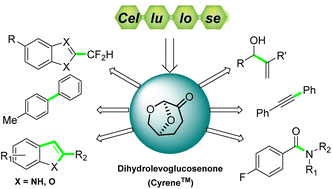
Green Chem., 2022,24, 6435-6449
https://doi.org/10.1039/D2GC02332F
Supramolecular deep eutectic solvents and their applications
Supramolecular Deep Eutectic Solvent (SUPRADES) – another milestone towards Green Chemistry.

Green Chem., 2022,24, 5035-5045
https://doi.org/10.1039/D2GC00906D
Synthesis of porous poly(ionic liquid)s for chemical CO2 fixation with epoxides
Porous poly(ionic liquid)s, combining the features of porous polymers and ionic moieties resembling the structures and functions of ionic liquids, have exhibited promising potential in CO2 fixation via cycloadditions with epoxides.
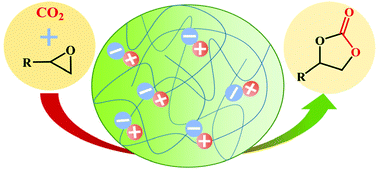
Green Chem., 2022,24, 3433-3460
https://doi.org/10.1039/D2GC00324D
Emerging carbon-based quantum dots for sustainable photocatalysis
This review focuses on the applications of emerging carbon-based QD materials (i.e., GQDs, CNQDs, MQDs, and GDQDs) in sustainable photocatalysis.
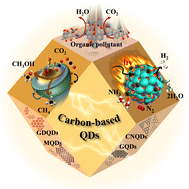
Green Chem., 2023,25, 32-58
https://doi.org/10.1039/D2GC03160D
Synthetic (bio)degradable polymers – when does recycling fail?
Mapping of the thermal, mechanical and (bio)degradation properties of fossil and bio-based polymers. When recycling fails, criteria and scenarios where (bio)degradable polymers are beneficial, for a sustainable development, were critically discussed.
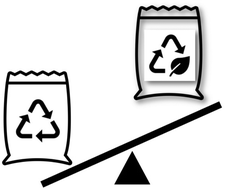
Green Chem., 2023,25, 13-31
https://doi.org/10.1039/D2GC02726G
Electro-oxidative depolymerization of lignin for production of value-added chemicals
Recent research progress on the electro-oxidative depolymerization of lignin for the production of value-added products has been reviewed, focusing on the catalysts, electrodes, processes, electrocatalytic system and additives.
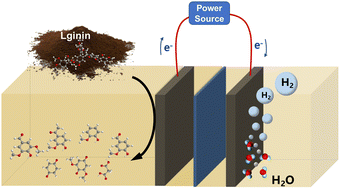
Green Chem., 2022,24, 8585-8605
https://doi.org/10.1039/D2GC02660K
Integrated design of an amination process of lignin oxygenated model compounds to synthesize cyclohexylamine: catalyst nanostructure engineering and catalytic conditional strategy
This review summarizes the research progress in the one-pot catalytic amination of lignin oxygenated model compounds to cyclohexylamine, specifically from the catalyst nanostructure engineering and catalytic conditional strategy.
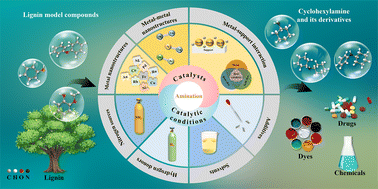
Green Chem., 2022,24, 6335-6359
https://doi.org/10.1039/D2GC01887J
Hydrodeoxygenation of potential platform chemicals derived from biomass to fuels and chemicals
This review summarizes a variety of catalytic systems to achieve the selective hydrodeoxygenation of potent biomass-derived platform chemicals with a focus on features including catalytic performance, active sites, and mechanism.
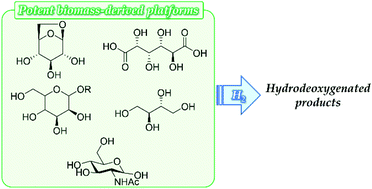
Green Chem., 2022,24, 5652-5690
https://doi.org/10.1039/D2GC01289H
Progress in the catalytic reactions of CO2 and epoxides to selectively provide cyclic or polymeric carbonates
This review of the metal- and organo-catalyzed coupling of CO2 and epoxides (oxiranes) to provide selectively cyclic or polymeric carbonates is intended to highlight recent achievements in this area of research.
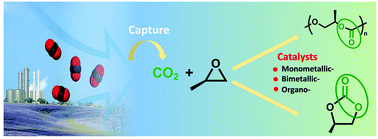
Green Chem., 2022,24, 5007-5034
https://doi.org/10.1039/D2GC01422J
Biomass-derived 2-methyltetrahydrofuran platform: a focus on precious and non-precious metal-based catalysts for the biorefinery
The existing literature has been summarized and synthesized, providing a new outlook for the preparation of 2-methyltetrahydrofuran from biomass substrates using precious and non-precious metal catalysts.

Green Chem., 2022,24, 4201-4236
https://doi.org/10.1039/D2GC00759B
Making more with less: confinement effects for more sustainable chemical transformations
Confinement effects offer unique opportinuties to facilitate reactions in a way to favor sustainability... in an almost magical way.
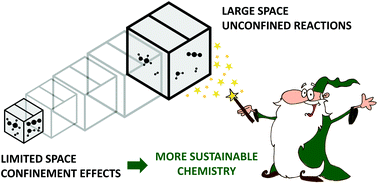
Green Chem., 2022,24, 1404-1438
https://doi.org/10.1039/D1GC03283F
Recent advances in biological production of 1,3-propanediol: new routes and engineering strategies
The development of new biological routes for 1,3-propanediol production from diversified substrates using engineered producers, new chassis, and new pathways.
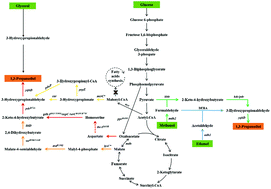
Green Chem., 2022,24, 1390-1403
https://doi.org/10.1039/D1GC04288B
Sustainability in peptide chemistry: current synthesis and purification technologies and future challenges
Developing greener synthesis processes is an inescapable necessity to transform the industrial landscape, mainly in the pharmaceutical sector, into a long-term, sustainable reality.
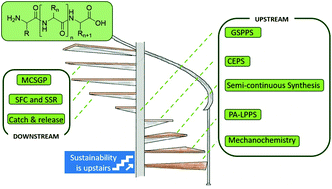
Green Chem., 2022,24, 975-1020
https://doi.org/10.1039/D1GC04387K
Remote C(sp3)–H heteroarylation of N-fluorocarboxamides with quinoxalin-2(1H)-ones under visible-light-induced photocatalyst-free conditions
A photocatalyst-free visible-light-promoted remote C(sp3)–H heteroarylation of N-fluoroamides with quinoxalin-2(1H)-ones was developed. All types of δ-C(sp3)–H bonds in the N-fluoroamides could be site-specific activated through the 1,5-HAT process.
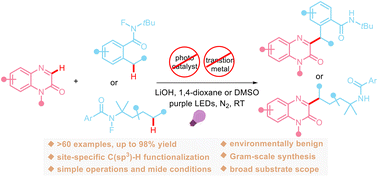
Green Chem., 2022,24, 9475-9481
https://doi.org/10.1039/D2GC02874C
Epoxidation of olefins enabled by an electro-organic system
An integrated organic electrosynthesis system was developed with a phase-separated membrane-electrode assembly strategy, coupling in situ electrochemical H2O2 production and olefin epoxidation, with only H2O and O2 consumption under ambient conditions.
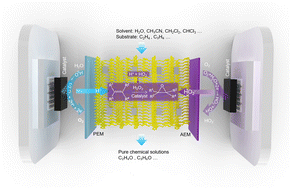
Green Chem., 2022,24, 8264-8269
https://doi.org/10.1039/D2GC02885A
Visible-light-induced sulfonylarylation of unactivated alkenes via 1,4-(hetero)aryl migration from oxygen or nitrogen to carbon
A new, metal-free, and highly atom economical strategy for the difunctionalization of unactivated alkenes under mild conditions.

Green Chem., 2022,24, 7869-7873
https://doi.org/10.1039/D2GC03187F
Antioxidant-induced transformations of a metal-acid hydrocracking catalyst in the deconstruction of polyethylene waste
This work details the effect of common antioxidants on the activity and functionality of a hydrocracking catalyst, along with associated changes to the product distribution in the deconstruction of high-density polyethylene.

Green Chem., 2022,24, 7332-7339
https://doi.org/10.1039/D2GC02503E
Visible-light-driven regioselective carbocarboxylation of 1,3-dienes with organic halides and CO2
An unprecedented visible-light-driven regioselective carbocarboxylation of 1,3-dienes with CO2 using aryl and alkyl halides under mild conditions is reported herein.
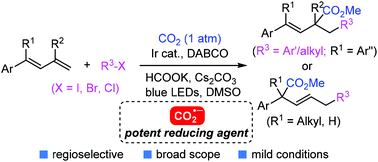
Green Chem., 2022,24, 6100-6107
https://doi.org/10.1039/D2GC01256A
Difunctionalization of unactivated olefins via selective electrochemical chlorosulfuration or chlorosulfoxidation
We introduced a combination of simple graphite electrodes, mild conditions, and a simple workup procedure for the selective preparation of sulfides or sulfoxides via unactivated olefins and thiophenols through a green electrochemical protocol.

Green Chem., 2022,24, 5760-5763
https://doi.org/10.1039/D2GC02134J
Practical synthesis of quinolone drugs via a novel TsCl-mediated domino reaction sequence
A novel TsCl-mediated domino sequence to expeditiously access quinolone-based antibiotics, starting from commercially available chromone-3-carboxaldehydes and amines, was developed under environmentally benign conditions.

Green Chem., 2022,24, 5755-5759
https://doi.org/10.1039/D2GC01689C
Electrochemical enaminone C–H thiolation/C–N amination cascade for thiazole synthesis and its diastereoselective dearomatization
The electrochemical annulation of enaminones/analogous enamines and thioureas providing 2-aminothiazoles has been realized. Modulating the electrolyte enables the diastereoselective synthesis of 4,5-dialkoxyl thiazolines by dearomatization.
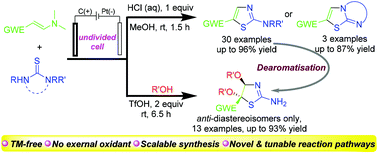
Green Chem., 2022,24, 5058-5063
https://doi.org/10.1039/D2GC01644C
Photoinduced synthesis of functionalized oxetanes via diradical-mediated ring contraction
A photochemical ring contraction is reported for the synthesis of oxetanes from dihydrofurans and diazo compounds under catalyst-free conditions.
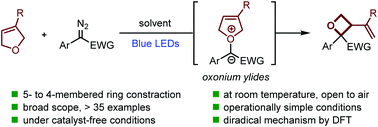
Green Chem., 2022,24, 5046-5051
https://doi.org/10.1039/D2GC01362B
Near quantitative conversion of xylose into bisfuran
Xylose is converted to a new type of bisfuranic compound in nearly quantitative yield with acetylacetone, through a Zr-catalysed Garcia Gonzalez reaction-based strategy by losing five molecules of water.
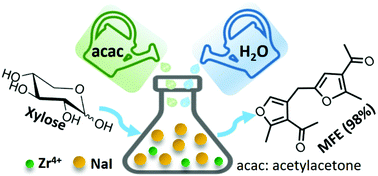
Green Chem., 2022,24, 5052-5057
https://doi.org/10.1039/D2GC00640E
Photoinduced cascade cyclization of alkynes with NH4SCN: access to SCN-containing dibenzazepines or dioxodibenzothiazepines
Photoinduced tandem cyclization of alkynes with NH4SCN was developed for the synthesis of various SCN-containing seven-membered N-heterocycles.

Green Chem., 2022,24, 4742-4747
https://doi.org/10.1039/D2GC01276F
Deep eutectic solvents meet safe, scalable and sustainable hydrogenations enabled by aluminum powder and Pd/C
The in situ generation of H2 from aluminum powder and water/KOH enabled a general hydrogenation method in cholinium chloride/glycerol deep eutectic solvent under Pd/C catalysis.
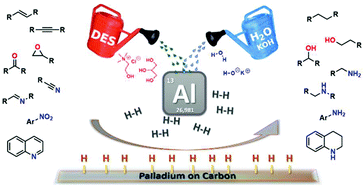
Green Chem., 2022,24, 4388-4394
https://doi.org/10.1039/D2GC00636G
Chemical recycling of polyhydroxybutyrate and polylactic acid over supported Ru catalysts
As an important step towards circular value-chains for bioplastics, we report a strategy for the direct catalytic processing of two biopolyesters.

Green Chem., 2022,24, 3957-3963
https://doi.org/10.1039/D2GC00216G
Organocatalyzed trifunctionalization of alkynyl 1,2-diones for the concise synthesis of acyloxy allylidene malonates and γ-alkylidenebutenolides
Two unprecedented reactions using alkynyl 1,2-diketones and 1,3-dicarbonyls under phosphine catalysis have been achieved, furnishing a range of acyloxy allylidene malonates and γ-alkylidenebutenolides in good yields with high stereoselectivities.

Green Chem., 2022,24, 3623-3628
https://doi.org/10.1039/D2GC00061J
From PEF to rPEF: disclosing the potential of deep eutectic solvents in continuous de-/re-polymerization recycling of biobased polyesters
For the first time, the design of a urea : zinc acetate DES for a continuous, eco-friendly and closed-loop approach for recycling poly(ethylene 2,5-furandicarboxylate) (PEF) is communicated to avoid its future accumulation in the environment.
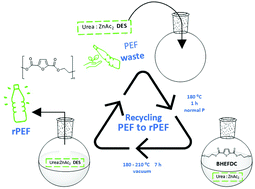
Green Chem., 2022,24, 3115-3119
https://doi.org/10.1039/D2GC00074A
Transition metal-free selective C–S bond cleavage of Ugi-adducts for rapid preparation of peptidomimetics
Diverse peptidomimetics containing N,O- or N,S-aminals are synthesized via a transition metal-free C–S bond cleavage and subsequent Mannich reaction.
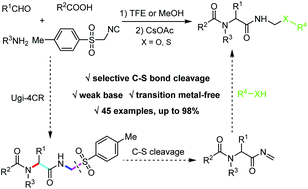
Green Chem., 2022,24, 2783-2787
https://doi.org/10.1039/D1GC04421D
HP(O)Ph2/H2O-promoted hydrodefluorination of trifluoromethyl alkenes
An efficient transition-metal-free hydrodefluorination reaction of trifluoromethyl alkenes for accessing gem-difluoroalkenes is developed. It was surprising to find that the phosphoryl anion is able to mediate the defluorination.
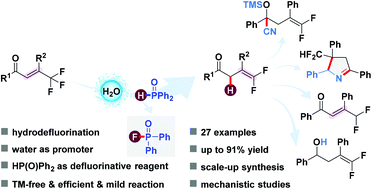
Green Chem., 2022,24, 2777-2782
https://doi.org/10.1039/D1GC04645D
Thermoneutral synthesis of spiro-1,4-cyclohexadienes by visible-light-driven dearomatization of benzylmalonates
No preactivation or coupling to high-energy reagents is required for the dearomative coupling of benzylmalonates and acetylenes, although the transformation has no significant thermodynamic driving force.
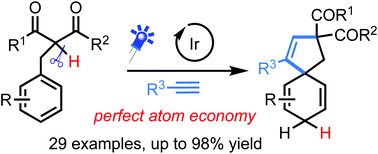
Green Chem., 2022,24, 2772-2776
https://doi.org/10.1039/D1GC04686A
Synthesis of 2,5-furandicarboxylic acid dimethyl ester from galactaric acid via dimethyl carbonate chemistry
A simple procedure for the one-pot synthesis of 2,5-furandicarboxylic acid dimethyl ester (FDME) from galactaric (mucic) acid via dimethyl carbonate (DMC) chemistry is presented. The compound was isolated as a white powder in 70% yield.

Green Chem., 2022,24, 2766-2771
https://doi.org/10.1039/D1GC04408G
Boosting CO2 electroreduction to C2+ products on fluorine-doped copper
CO2 could be efficiently converted into C2+ products over a fluorine doped Cu catalyst, with high faradaic efficiency (70.4%) and current density (above 400 mA cm−2), which benefited from the boost the adsorption of CO intermediate.
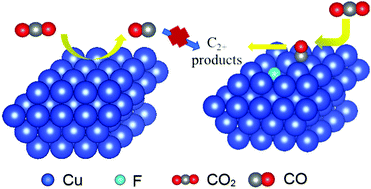
Green Chem., 2022,24, 1989-1994
https://doi.org/10.1039/D1GC04824D
Synthesis of carboxylic acids via the hydrocarboxylation of alcohols with CO2 and H2
Alcohols with different chain lengths can react with CO2 and H2 to produce C1-elongated carboxylic acids using an Ir catalyst.

Green Chem., 2022,24, 1973-1977
https://doi.org/10.1039/D1GC04569E
Electrochemical-induced benzyl C–H amination towards the synthesis of isoindolinones via aroyloxy radical-mediated C–H activation
A novel electrochemical strategy for the synthesis of valuable isoindolinones has been developed with the use of simple o-alkylbenzoic acid and alkyl nitrile as starting materials under metal-catalyst and external oxidant-free conditions.
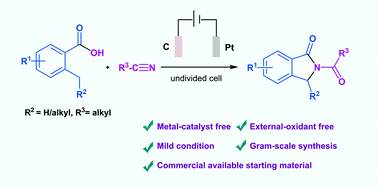
Green Chem., 2022,24, 1445-1450
https://doi.org/10.1039/D1GC04676D
Tuning the efficiency and product composition for electrocatalytic CO2 reduction to syngas over zinc films by morphology and wettability
The regulation of morphology and wettability of Zn films is an efficient strategy for producing syngas with a wide CO/H2 ratio range from electrochemical CO2 and H2O reduction.
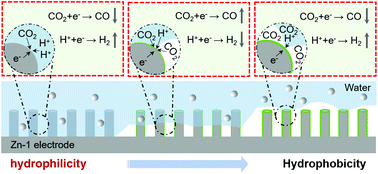
Green Chem., 2022,24, 1439-1444
https://doi.org/10.1039/D1GC04364A
Boosting nitrate electroreduction to ammonia on NbOxvia constructing oxygen vacancies
A NbOx catalyst with oxygen vacancies is synthesized and used for nitrate electroreduction to ammonia. The faradaic efficiency of 94.5% and the NH3 formation rate of 55.0 μg h−1 mgcat−1 can be achieved in a neutral electrolyte.
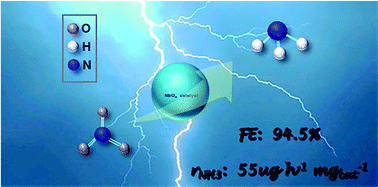
Green Chem., 2022,24, 1090-1095
https://doi.org/10.1039/D1GC04483D
Organophotocatalytic silyl transfer of silylboranes enabled by methanol association: a versatile strategy for C–Si bond construction
A visible light-induced organophotocatalytic silyl transfer strategy of silylboranes for the construction of C–Si bonds has been demonstrated, where methanol association with boron atoms enables the photocatalytic generation of silyl radicals.
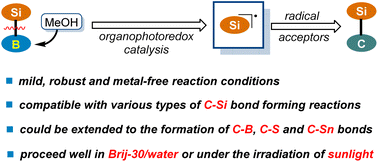
Green Chem., 2023,25, 256-263
https://doi.org/10.1039/D2GC03577D
Guiding research in electrochemical CO2 conversion strategies through a systems-level perspective
Life cycle assessment as a decision-making tool in R&D of CO2 conversion technologies. A set of technologies are explored to provide recommendations regarding potential climate impacts. Relevant fundamentals of this type of assessment are provided.
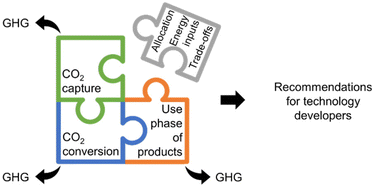
Green Chem., 2023,25, 229-244
https://doi.org/10.1039/D2GC01466A
High yield production of 1,4-cyclohexanediol and 1,4-cyclohexanediamine from high molecular-weight lignin oil
we present a highly efficient catalytic strategies which are capable of converting DMBQ obtainable from high molecular-weight lignin-oil into industrially highly relevant and well-defined 1,4-cyclohexanediol and 1,4-cyclohexanediamine.
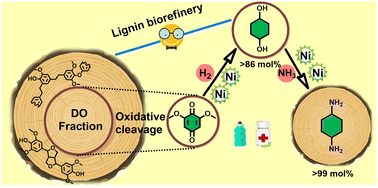
Green Chem., 2023,25, 211-220
https://doi.org/10.1039/D2GC03777G
N-Haloimide-enabled halogenation via halogen-bond-assisted C–C activation of alkanols
The halogen-bond-assisted C–C activation of alkanols to synthesize a library of alkyl halides in the absence of catalysts and oxidants is disclosed, wherein inexpensive N-haloimides were explored as bifunctional reagents.
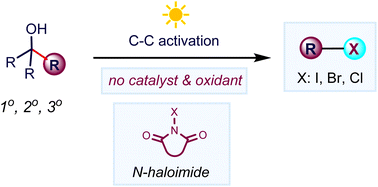
Green Chem., 2023,25, 221-228
https://doi.org/10.1039/D2GC03768H
New insights into urethane alcoholysis enable chemical full recycling of blended fabric waste
New insights into amide-esterification during urethane alcoholysis are presented, and they enable chemical-full-recycling of blended fabric waste.
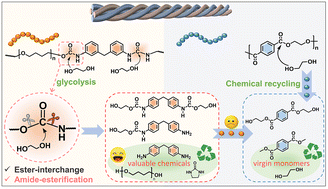
Green Chem., 2023,25, 245-255
https://doi.org/10.1039/D2GC03663K
An enhanced strategy based on the pyrolysis of bean dregs for efficient selective recovery of lithium from spent lithium-ion batteries
Bean dregs were exploited as a green reducing agent, and adopted an enhanced recycling process combining biomass reduction roasting and carbonated water leaching to efficiently and selectively recover Li from the spent LIBs.
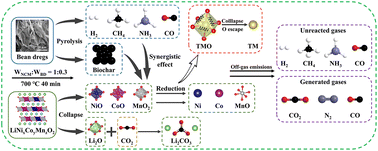
Green Chem., 2022,24, 9552-9564
https://doi.org/10.1039/D2GC03439E
Bi-functional ionic liquids facilitate liquid-phase exfoliation of porphyrin-based covalent organic frameworks in water for highly efficient CO2 photoreduction
A green, high yield and scalable strategy to exfoliate covalent organic framework powders using bi-functional ionic liquids in water was developed under ambient conditions.
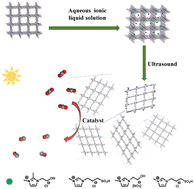
Green Chem., 2022,24, 9530-9541
https://doi.org/10.1039/D2GC03194A
Cyclohexanone ammoximation via in situ H2O2 production using TS-1 supported catalysts
The in situ synthesis of H2O2 offers an attractive alternative to the current industrial route to cyclohexanone oxime, a major precursor to Nylon-6.

Green Chem., 2022,24, 9496-9507
https://doi.org/10.1039/D2GC02689A
Valorisation of wine wastes by de novo biosynthesis of resveratrol using a recombinant xylose-consuming industrial Saccharomyces cerevisiae strain
A recombinant S. cerevisiae strain was engineered to produce resveratrol from many carbon sources, including xylose, which was used for the synthesis of resveratrol from different wine wastes like vine pruning residue, grape must and wine lees.
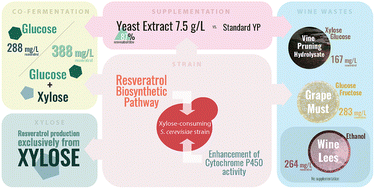
Green Chem., 2022,24, 9128-9142
https://doi.org/10.1039/D2GC02429B
High performance, but low cost and environmental impact? Integrated techno-economic and life cycle assessment of polyoxazolidinone as a novel high-performance polymer
Life Cycle Assessment (LCA) and Techno-economic Assessment (TEA) are crucial for a comprehensive evaluation of the novel high-performance thermoplastic polymer polyoxazolidinone (POX).
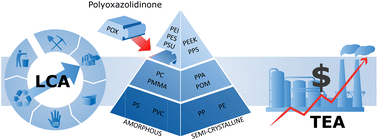
Green Chem., 2022,24, 9143-9156
https://doi.org/10.1039/D2GC02400D
Catalytic production of tetrahydropyran (THP): a biomass-derived, economically competitive solvent with demonstrated use in plastic dissolution
Tetrahydropyran (THP) is a five-carbon heterocyclic ether that is non-carcinogenic, non-peroxide forming, biodegradable, and economically competitive with tetrahydrofuran (THF) as a solvent.
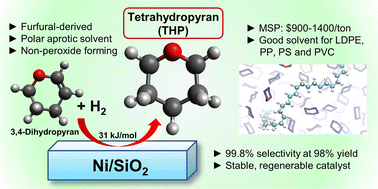
Green Chem., 2022,24, 9101-9113
https://doi.org/10.1039/D2GC03475A
Hydrogels with protective effects against cellular oxidative stress via enzymatic crosslinking of feruloylated arabinoxylan from corn fibre
Corn fibre agricultural side streams can be upgraded into radical scavenging hydrogels with protective effects against cellular oxidative stress using mild biocatalytical processes.
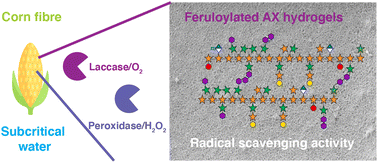
Green Chem., 2022,24, 9114-9127
https://doi.org/10.1039/D2GC03331C
Valorisation of phenols to coumarins through one-pot palladium-catalysed double C–H functionalizations
Herein a one-pot double C–H functionalization for constructing C8-alkyl substituted coumarins from phenols is reported. For the first time Pd/C as heterogenous catalyst was used to enable the synthesis of structurally divers coumarins.

Green Chem., 2022,24, 9094-9100
https://doi.org/10.1039/D2GC03579K
Preparation of battery-grade lithium carbonate by microbubble enhanced CO2 gas–liquid reactive crystallization
A microbubble enhanced CO2 gas–liquid reactive crystallization process for the one-step preparation of battery-grade Li2CO3 has been proposed. The LiFePO4 cathode synthesized from battery-grade Li2CO3 exhibits a remarkable specific capacity.

Green Chem., 2022,24, 9084-9093
https://doi.org/10.1039/D2GC03375E
Risk for the release of an enormous amount of nanoplastics and microplastics from partially biodegradable polymer blends
Non-biodegradable polymers are released as microplastics into the environments during the biodegradation of partially biodegradable polymer blends.

Green Chem., 2022,24, 8742-8750
https://doi.org/10.1039/D2GC02388A
Lignin alkaline oxidation using reversibly-soluble bases
When excess base is required to drive desired reactions, such as in lignin alkaline oxidation, Sr(OH)2 can offer a reversibly-soluble alternative to NaOH that allows simple recycle of the excess base with concomitant cost and environmental benefits.

Green Chem., 2022,24, 8733-8741
https://doi.org/10.1039/D2GC03333J
Antioxidant silicone oils from natural antioxidants
Natural antioxidants, such as vitamin E and eugenol, once grafted to silicone oils maintain their antioxidant activity and dilute the quantity of silicone needed for a given application.
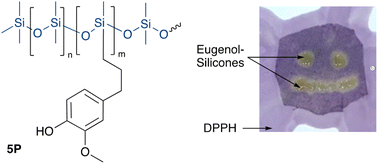
Green Chem., 2022,24, 8751-8759
https://doi.org/10.1039/D2GC03112D
1,2,3,5-Tetrakis(carbazol-9-yl)-4,6-dicyanobenzene (4CzIPN)-based porous organic polymers for visible-light-driven organic transformations in water under aerobic oxidation
A series of hyper-crosslinked POPs were constructed by Friedel–Crafts alkylation reaction of 4CzIPN with FDA, which contains a certain quantity of hydrophilic ether residues to facilitate visible-light-promoted aqueous organic transformations.
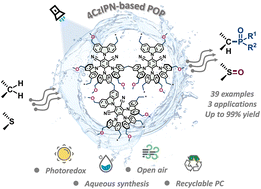
Green Chem., 2022,24, 8725-8732
https://doi.org/10.1039/D2GC02950B
A chemical approach for the future of PLA upcycling: from plastic wastes to new 3D printing materials
Chemical upcycling of PLA: Ethanolamine cleaves polylactic acid to high purity N-LEA. N-LEA reacts with methacrylic anhydride (MAh) yielding crosslinkable DME. Simply combine DME with reactive diluent and photo-initiator to form a 3D printing resin.
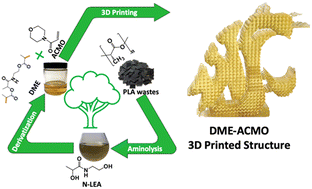
Green Chem., 2022,24, 8716-8724
https://doi.org/10.1039/D2GC01745H
Production of glucose-galactose syrup and milk minerals from Greek yogurt acid whey
A techno-economic analysis and life cycle assessment for the process to produce a sweetener and calcium supplement from Greek yogurt acid whey show that this method has high profitability and a lower environmental footprint than other sweeteners.
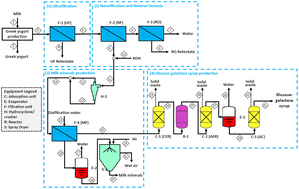
Green Chem., 2022,24, 8538-8551
https://doi.org/10.1039/D2GC02453E
Electrochemical Minisci reaction via HAT-driven α-C(sp3)–H functionalization of alcohols
An electrochemical Minisci reaction involving HAT driven α-C(sp3)–H functionalization of alcohols was achieved. Both primary and secondary alcohols are applicable to provide 3-hydroxyalkylquinoxalin-2(1H)-ones in good yields.
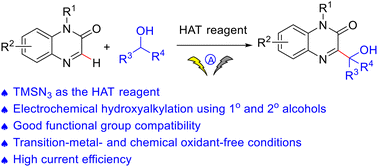
Green Chem., 2022,24, 8406-8411
https://doi.org/10.1039/D2GC03156F
Synthesis of dihydroindazolo[2,3-f]phenanthridin-5(6H)-ones via Rh(III)-catalyzed C–H activation of 2-aryl indazoles and annulation with iodonium ylides
The Rh(III)-catalyzed annulation of 3-arylindazoles with iodonium ylides gave indazole fused dihydrophenanthridinones in excellent yields under mild conditions. The reaction only requires simple work-up procedures, and the catalyst can be recycled.
![Graphical abstract: Synthesis of dihydroindazolo[2,3-f]phenanthridin-5(6H)-ones via Rh(iii)-catalyzed C–H activation of 2-aryl indazoles and annulation with iodonium ylides](/en/Image/Get?imageInfo.ImageType=GA&imageInfo.ImageIdentifier.ManuscriptID=D2GC03020A&imageInfo.ImageIdentifier.Year=2022)
Green Chem., 2022,24, 8441-8446
https://doi.org/10.1039/D2GC03020A
A natural deep eutectic solvent-based aqueous biphasic system coupled with MoS2 photocatalytic reduction for green recovery of gold from thiosulfate solution
Aqueous two-phase system (ATPS) extraction combined with a natural deep eutectic solvent (NADES) is an environmentally friendly separation process.
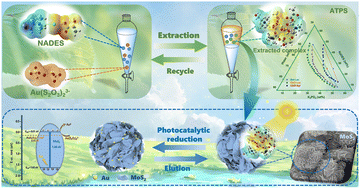
Green Chem., 2022,24, 8330-8344
https://doi.org/10.1039/D2GC02917K
Base-selective access to highly functionalized heterocycles from multicomponent Ugi adducts
Selection of the appropriate base in Ugi/post-condensation sequences allows the selective syntheses of different ring-size functionalized lactams.
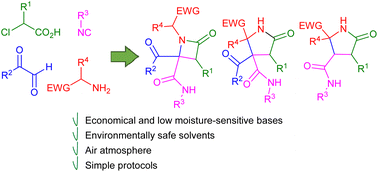
Green Chem., 2022,24, 7988-7995
https://doi.org/10.1039/D2GC02896D
Photo-driven metal-free multicomponent reaction between aldehydes, anilines and 4-substituted-DHPs for the synthesis of secondary amines
A photocatalyst- and transition-metal-free multicomponent reaction of readily available aldehydes, primary amines and 4-alkyl-1,4-dihydropyridines for the synthesis of secondary amines under visible light irradiation has been accomplished.

Green Chem., 2022,24, 7968-7973
https://doi.org/10.1039/D2GC02613A
Anodic generation of hydrogen peroxide in continuous flow
The study underscores the development of an efficient electrochemical process for anodic H2O2 production in continuous flow by investigating electrochemical cell setup, electrolyte flow type and rate, as well as electrolyte composition.

Green Chem., 2022,24, 7931-7940
https://doi.org/10.1039/D2GC02575B
Hydroxylation and dimerization of para-dihydroxylated aromatic compounds mediated by cold atmospheric-pressure plasma in comparison with chemically catalyzed reactions
Physical plasma as novel possibility for the synthesis of organic substances e.g. hydroxylated dimers.
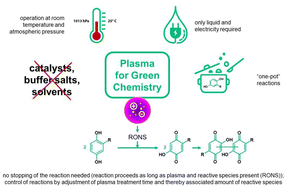
Green Chem., 2022,24, 7951-7967
https://doi.org/10.1039/D2GC01624A
Are deep eutectic solvents really green?: A life-cycle perspective
Life-cycle assessment of choline chloride/urea (reline) deep eutectic solvent compared with conventional organic solvents.
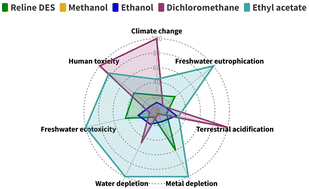
Green Chem., 2022,24, 7924-7930
https://doi.org/10.1039/D2GC01752K
Photocatalytic dehydrogenated etherification of 2-aryl benzylic alcohols
Here we describe an efficient and practical method for the conversion of 2-aryl benzylic alcohols into the corresponding chromenes with the synergistic interactions of 2-bromoanthraquinone, O2, nBu4NBr and K2CO3 under visible-light irradiation.
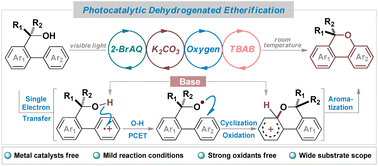
Green Chem., 2022,24, 7442-7447
https://doi.org/10.1039/D2GC02030K
Green chemical pathway of plasma synthesis of ammonia from nitrogen and water: a comparative kinetic study with a N2/H2 system
This work demonstrates alternative green ammonia processing using nitrogen and water based non-thermal plasma without pure hydrogen supply which results in an enormous amount of CO2 emission.
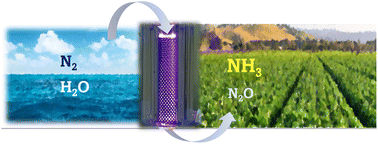
Green Chem., 2022,24, 7458-7468
https://doi.org/10.1039/D2GC02299K
Start from the source: direct treatment of a degraded LiFePO4 cathode for efficient recycling of spent lithium-ion batteries
The flow process of recycling a degraded LiFePO4 cathode.
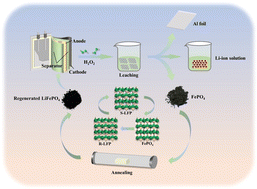
Green Chem., 2022,24, 7448-7457
https://doi.org/10.1039/D2GC02652J
Redox-neutral ketyl radical coupling/cyclization of carbonyls with N-aryl acrylamides through consecutive photoinduced electron transfer
Redox-neutral ketyl couplings: a metal- and additive-free ConPET photocatalytic system allows highly efficient coupling/cyclization of N-aryl acrylamides and carbonyls with formal 100% atom economy.
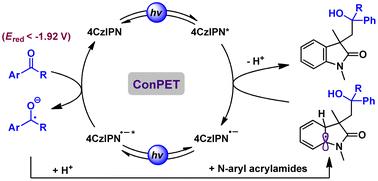
Green Chem., 2022,24, 7403-7409
https://doi.org/10.1039/D2GC01966C
About this collection
Welcome to our online rolling collection of the hottest work published in Green Chemistry. Here we feature all of the 2022 articles highlighted as HOT by our Editors and Referees. Congratulations to all those featured!